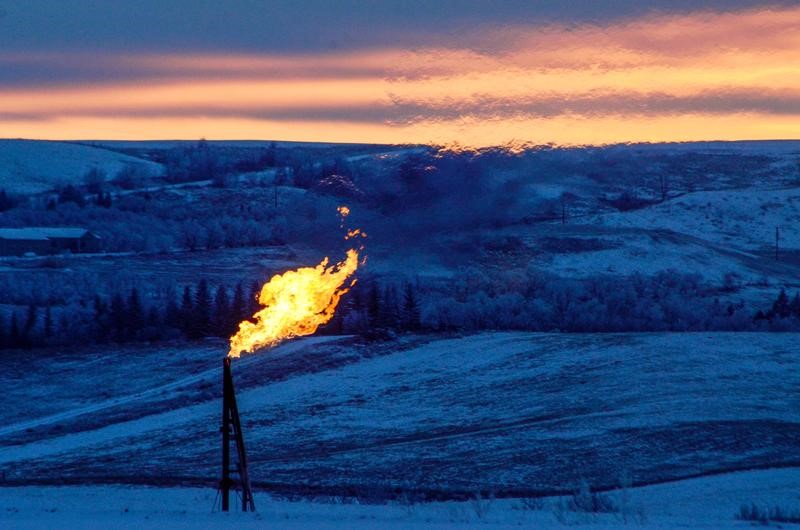By Devika Krishna Kumar
NEW YORK (Reuters) - Oil prices inched higher on Monday, as investor optimism over the effectiveness of producer cuts encouraged record bets on a sustained rally, although growing U.S. output and stubbornly high stockpiles kept price gains in check.
Top OPEC exporter Saudi Arabia's crude oil shipments fell in December to 8.014 million barrels per day (bpd) from 8.258 million bpd in November, official data showed on Monday.
Brent futures (LCOc1) were up 37 cents at $56.18 a barrel at 1:05 p.m. EST, while U.S. West Texas Intermediate crude (CLc1) was up 29 cents, or 0.5 percent, at $53.69 in very thin trading.
The U.S. market is closed on Monday for the Presidents Day holiday. WTI futures for delivery in March expire Tuesday.
Prices got a slight lift from a weaker dollar (DXY) as well. A strong greenback typically makes oil more expensive for holders of other currencies.
The Organization of the Petroleum Exporting Countries and other producers, including Russia, agreed last year to cut output by almost 1.8 million bpd during the first half of 2017.
Estimates indicate compliance with the cuts is around 90 percent. Reuters reported last week that OPEC could extend the pact or apply deeper cuts from July if global crude inventories fail to drop enough.
Investors have certainly taken OPEC members at their word on their commitment to cut production and now hold more crude futures and options than at any time on record. [CFTC/] [O/ICE]
However, the December Saudi figures may not reflect the full picture, analysts said.
"Ahead of the agreed production cuts, Saudi Arabia had chosen not to reduce its output as it normally would have in the winter half year, so as to be able at a later date to make this appear part of the agreed reduction in production," Commerzbank (DE:CBKG) said in a note.
"Presumably the decrease in production and exports in December should be seen against this backdrop, and could already have been undertaken to pre-empt the production cuts due to take force from January."
Signs of rising output in the United States have tempered money managers' appetite to push prices higher. Since the start of the month oil prices have gained around $2.
"There is still a general consensus that the OPEC/non-OPEC agreement helps supply to get in line with demand. This bullish stance is countered by the ever-increasing inventories in the U.S. and rising rig counts," PVM Oil Associates strategist Tamas Varga said in a note.
U.S. energy companies added oil rigs for a fifth consecutive week, Baker Hughes said on Friday, extending a nine-month recovery with producers encouraged by higher prices, which have largely traded above $50 a barrel since late November. [RIG/U]

"Assuming the U.S. oil rig count stays at the current level, we estimate U.S. oil production would increase by 405,000 (barrels per day) between fourth-quarter 2017 and fourth-quarter 2016 across the Permian, Eagle Ford, Bakken and Niobrara shale plays," Goldman Sachs (NYSE:GS) said in a research note.